#Kojiki
Text

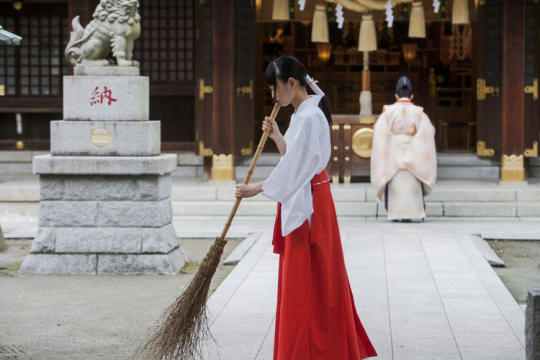


Sean bienvenidos mis queridos fanáticosarqueológicos a una nueva entrega de prehistoria Japónesa en esta ocasión nos trasladamos a la pregunta ¿Cuándo se originó el sintoísmo?.
-
Aunque parezca raro es una religión que se conformo durante el periódo Jōmon (17.500-300), para ser exactos a finales de dicho período y continua hasta nuestros días los dioses del sintoísmo, se les llama Kamis ( dios) ya que para los japoneses todo tenía un dios las montañas, ríos.
-
El sintoísmo tiene influencias chinas, coreanas de hay que tenga similitudes con el taoísmo, ¿Qué dos libros recogen la categoría de los Kamis? Son el Kojiki(713d.c) y el Nihonshoki(720d.c).
-
Espero que os guste y nos vemos en una próxima públicacion un cordial saludo.
🇯🇵
私の愛する考古学ファンを日本の先史時代の新作に歓迎します。今回は、神道がいつ始まったのかという質問に移ります。
-
奇妙に思えるかもしれませんが、縄文時代(17500-300)に形成された宗教であり、正確にはその時代の終わりに、今日まで神道の神であり、カミス(神)と呼ばれています。 日本人にとって、山や川にはすべて神がいました。
-
神道は中国、韓国の影響を受けており、道教との類似点があります。 カミスのカテゴリーに分類される2冊の本は何ですか? こうじき(713d.c)と日本書紀(720d.c)です。
-
よろしくお願いします。次の出版物で心からのご挨拶を申し上げます。
🇬🇧
Welcome my dear archaeological fans to a new installment of Japanese prehistory, this time we move to the question, when did Shintoism originate?
-
Although it may seem strange, it is a religion that was formed during the Jōmon period (17500-300), to be exact at the end of that period and continues to this day the gods of Shintoism, they are called Kamis (god) since for the Japanese everything the mountains and rivers had a god.
-
Shintoism has Chinese, Korean influences, and there are similarities with Taoism. What two books are classified under the category of the Kamis? They are the Kojiki (713d.c) and the Nihonshoki (720d.c).
-
I hope you like it and see you in a next publication a cordial greeting.
#kamis#kami#japanese gods#history#japan#jōmon#jōmon period#prehistory#japanese prehistory#taoism#china#korea#religious history#kojiki#Nihonshoki#カミス#カミ#日本の神々#歴史#日本#城門#ピリオドジョモン#先史時代#先史時代日本人#道教#中国#韓国#ヒストリアレリギオーザ#コジキ#日本書紀
78 notes
·
View notes
Text
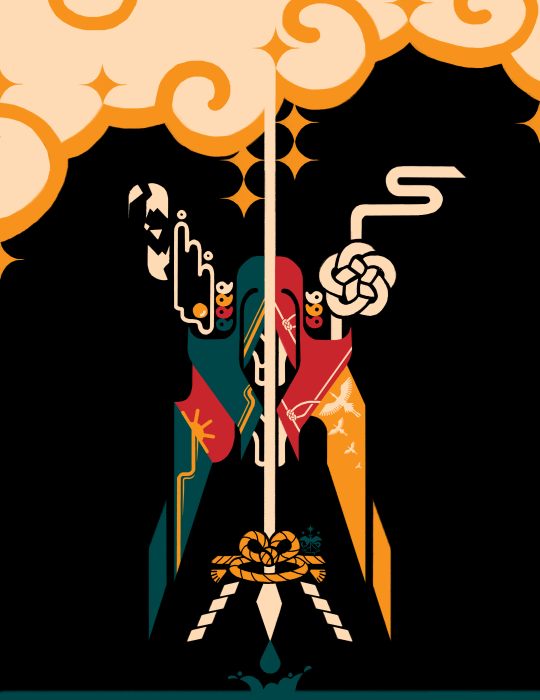
Abstract Kuniumi
Commission Info
#art#my art#artists on tumblr#shinto#izanami okami#izanagi okami#kojiki#japan#japanese mythology#I've been on a Shinto roll lately#only my faith is bringing me peace these days /lh
41 notes
·
View notes
Text

180124
the soul king
photos / collage by Alexei Siozov
52 notes
·
View notes
Text

Dishonor to Ghidorah, the false king of lightning!⚡️
🐲🐲🐲
#history#ghidorah#tomoyuki tanaka#yamata no orchi#japanese mythology#movie history#godzilla#king of the monsters#kaiju#kojiki#japanese history#shinto#japan#dragon#ghidorah the three headed monster#monsters#movies#1960s#mythological history#toho studios#monsterverse#venus#mythological creature#behind the scenes#ichi#ni#kevin#nickys facts
14 notes
·
View notes
Text
Botanic Tournament : Cherry Blossoms Bracket !
Round 1 Part 1 Poll 3
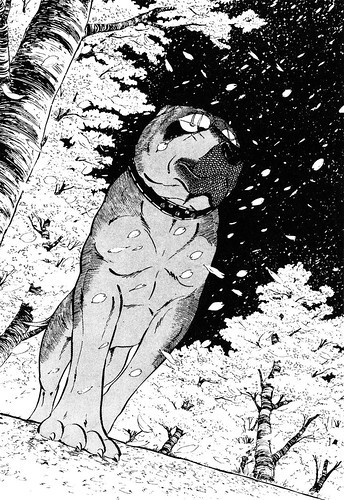

Benizakura means "crimson cherry blossom"
Konohananosakuya-hime can be translated as "cherry tree blossom blooming princess"
#tournament polls#botanic tournament#cherry blossoms bracket#round 1#ginga#ginga nagareboshi gin#hopeanuoli#benizakura#ginga benizakura#konohana#konohananosakuya-hime#konohananosakuya#ko-no-hana#sengen#sakuya-hime#sakuya hime#asama no okami#kojiki#nihon shoki#silver fang
27 notes
·
View notes
Text
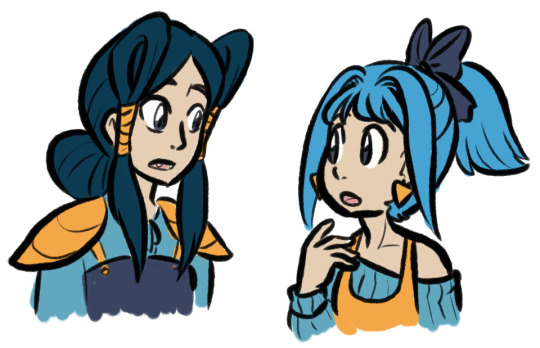
When I bought my copy of Alpha Sapphire it had a previous owner's save data, but the file had the default name 'Brendan' and like a dozen Pokemon. Like this guy had one badge. Josh the Boyfriend did the busywork of getting that file to the name rater, and from there I named them all and shoved them into the bank. I just beat the Delta Episode in my own file, so now I'm finally putting those original refugees back in. Kojiki finally gets to meet his big sister Mae. She's named and modeled after the Sapphire player character because her OT is 'Brendan' and I felt like that fit. Although, Hitorigami, who was the sacrifice from that file, is future-themed so maybe all those Pokemon should also have outfits that match? Or not. I don't know yet. So this is just a tentative design, I just wanted to commemorate Mae coming home.
EDIT: accidentally posted this to Popkas and deleted it augh
10 notes
·
View notes
Text
just bought a translation of an ancient japanese text (the kojiki) and they translated all of the names literally i think im in hell. what the fuck do you mean "ripening rice ears lad" that is fucking hiko-ho-no-ninigi im so pissed off
4 notes
·
View notes
Text

Buddhist Temple in the Kojiki-Yato neighbourhood of Yokohama, Japan
Japanese vintage postcard
#buddhist#japan#historic#temple#kojiki#photo#briefkaart#vintage#sepia#photography#carte postale#postcard#postkarte#neighbourhood#postal#tarjeta#ansichtskarte#old#ephemera#postkaart#yato#japanese#yokohama
6 notes
·
View notes
Text

Cheeky Kojiki
#kojiki#yokai#izanami#izanagi#japan#art#tatlockart#digtial art#character#creation#myth#mythology#folklore#oni#whale#tanuki#koi#sakura#cherry blossom#island#salamander#gods#god#kami#japanese gods
5 notes
·
View notes
Text




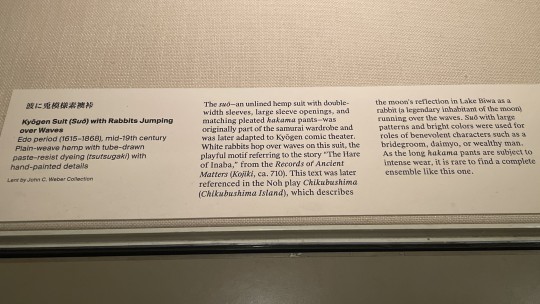
#LunarNewYear #YearOfTheRabbit at the Metropolitan Museum of Art, New York:
Kyōgen Suit (Suō) with Rabbits Jumping over Waves
Japan, Edo period
mid-19th century
plain-weave hemp with tube-drawn paste-resist dyeing (tsutsugaki) with hand-painted details
dimensions: Jacket (a): 31 1/8 × 71 in. (79.1 × 180.3 cm)
"The suō—an unlined hemp suit with double-width sleeves, large sleeve openings, and matching pleated hakama pants—was originally part of the samurai wardrobe and was later adapted to Kyōgen comic theater. White rabbits hop over waves on this suit, the playful motif referring to the story “The Hare of Inaba,” from the Records of Ancient Matters (Kojiki, ca. 710). This text was later referenced in the Noh play Chikubushima (Chikubushima Island), which describes the moon’s reflection in Lake Biwa as a rabbit (a legendary inhabitant of the moon) running over the waves. Suō with large patterns and bright colors were used for roles of benevolent characters such as a bridegroom, daimyo, or wealthy man. As the long hakama pants are subject to intense wear, it is rare to find a complete ensemble like this one."
Photographed on display at the Met's Kimono Style exhibition (catalog entry here).
#rabbit#rabbits#mammals#kimono#suō#Kyōgen#Kojiki#The Hare of Inaba#Chikubushima#textiles#historical costume#theatre#Japan#Japanese art#Asian art#19th century#Metropolitan Museum of Art New York#Kimono Style#exhibition#museum visit#animals in art
16 notes
·
View notes
Text
日本の歴史366 Day 28
1月28日 Summary:
Kojiki (broken into 3 parts) is Japan's oldest historical record. It is a collection of myths, legends, semi-historical events, oral traditions, genealogies, and the foundation myth of Japan. It is believed that the purpose behind this was to collect/formulate a single mythology to justify the rule of the Imperial family. The Kojiki's accounts go as early as 641 CE.
I don't think I have the strength, nor Japanese reading prowess to take a crack at it. I just know archaic kana are probably in it too...enough to make me cry...let's not forget calligraphy 😭
Vocab beneath the break:
古事記 こじき Kojiki; Records of Ancient Matters (Japan's oldest historical record)
完成 かんせい completion
神話 しんわ myth; legend
おなじみ familiar; well-known; favorite
エピソード episode; anecdote; vignette
満載 まんさい being packed with; fully loaded (with); filled to the brim with
国 くに country; state
成り立ち なりたち the way in which something came about; origin
推古天皇 すいこてんのう Empress Suiko; Suiko Tenno (554-628 CE, reigning: 592-628 CE) (33rd empress of Japan)
歴史 れきし history
記す しるす to write down; to note down; to jot down; to take a note of
最古 さいこ the oldest; the earliest
歴史書 れきししょ history book
太安万侶 おおのやすまろ Oono Yasumaro (Japanese nobleman and chronicler)
天皇 てんのう emperor of Japan
献上 けんじょう presenting to
編纂 へんさん compilation (esp. dictionary, history, law code); editing
序文 じょぶん preface; forward; introduction
前書き まえがき preface; forward; preamble
によると according to (someone)
和銅 わどう Wadō era (708.1.11-715.9.2)
元明天皇 げんめいてんのう Empress Genmei (43rd empress of Japan)
身分 みぶん (social) standing; status; position; rank; birth
差し上げる さしあげる to give; to present; to offer (humble/kenjougo)
内容 ないよう contents; content; substance; matter; detail; import
上中下 じょうちゅうげ (in) three volumes (a literary work)
分かれる わかれる to separate; to split; to divide
上巻 じょうかん first volume (in a two or three-volume set); first book; volume one; book one
中巻 ちゅうかん second volume (of three); second book; volume two; book two
初代 しょだい first generation; founder
神武天皇 じんむてんのう Emperor Jinmu (according to the Kojiki, he is the legendary first Emperor of Japan; according to Japanese mythology, he is the descendant of the sun goddess Amaterasu)
応神天皇 おうじんてんのう Emperor Oujin (15th Emperor of Japan)
下巻 げかん second volume (in a two-volume set); third volume (in a three-volume set); last volume
仁徳天皇 にんとくてんのう Emperor Nintoku (16th Emperor of Japan)
#shay's taking notes#japanese history 366#japanese history#japanese culture#japanese#learn japanese#study japanese#vocab#kojiki
10 notes
·
View notes
Photo
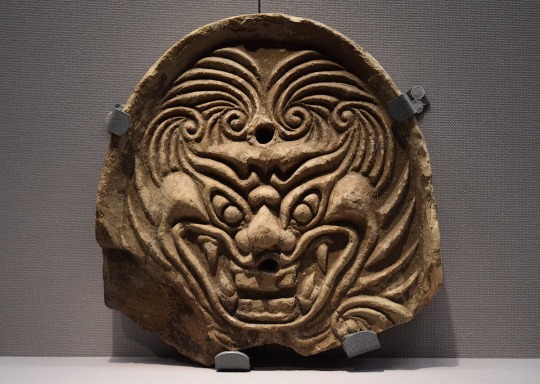
Los fantasmas en el antiguo Japón
Los fantasmas (obake o yurei) aparecen en el folclore y la literatura japonesa antigua, normalmente en cuentos con una moraleja pensados tanto para advertir como para entretener, pero también eran un elemento importante del culto a los antepasados. Si no se honraba a los miembros fallecidos de una familia, podían causar estragos en la vida cotidiana de quienes los habían olvidado. No había mucho que se pudiera hacer para evitar a los fantasmas, demonios y duendes, y la única salvaguarda contra el daño era rezar o confiar en la protección de los dioses sintoístas o Buda. Sin embargo, estos espíritus no siempre son malignos y sus poderes pueden anularse; a veces incluso pueden convertirse en buenos si se les somete a los hechizos y rituales adecuados.
Lire la suite...
2 notes
·
View notes
Text
Light Novel Kojiki
I found an adaptation of the Kojiki Text. It is a light novel written by Yu Onodera. The story is posted on the official website and here is the English Translation.
Here is the original Japanese Version.
But by looking at the Japanese Version, Volume 1 has only been translated to English. Here the link to the English Table of Contents.
Here a link to the Japanese Table of Contents for Volume 1.
This is the Japanese Table of Contents for Volume 2.
The manga adaptation for this light novel is on Comic-Walker by Aoi Koma called Manga Kojiki Izanagi and Izanami. Some of the chapters are missing though because I think the manga writer/artist did not want to post them all online.
3 notes
·
View notes
Text
fuck dude those sure are some names

#swelling tip#thriving tip#entirely engorged#awesome indeed#spinnychaircirclecasting#college#coolegg#kojiki#diary entry#translation#weird translation
2 notes
·
View notes
Text
Nihon no shinwa.
New item:
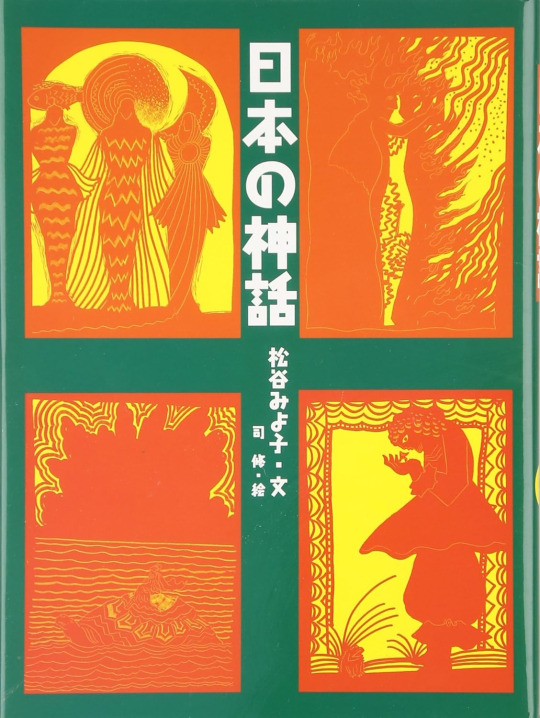
Shelf: 913.2 MAT (@ children's book section)
Nihon no shinwa.
text by Matsutani Miyoko ; illustrations by Tsukasa Osamu.
Tōkyō : Nora Shoten, 2001
ISBN: 9784931129139
183 pages, 1 leaf of colour plate : illustrations ; 21 cm.
Text in Japanese, furigana on most of kanji chracters.
0 notes
Text
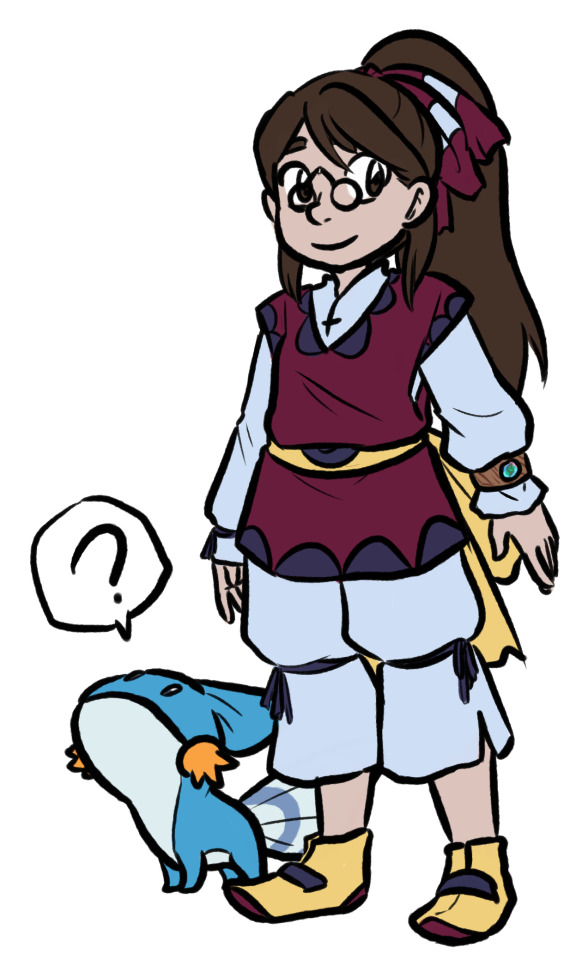
I stopped working on Pokemon stuff for a while to work on Laserwing stuff. But now I'm trying to catch back up in Pokemon, at least for a little while. I think what slowed me down was that I wanted to stream every big art piece for my Alpha Sapphire team and I never found good time for that. Anyways, one of the things I had never pinned down was a trainer outfit for myself, so here's a design.
This is horribly anachronistic, of course. It's based very loosely on ancient Japanese clothes but also on May's outfit in Alpha Sapphire. The colors are pulled straight from my version of May's outfit in my normal Sapphire art. I highly doubt you could find this shade of purple in any ancient culture's clothing, the dye for it would be really hard to make. But I want purple, so there. The glasses are out of place but I need them to see.
For a split second I considered that maybe I should design myself an outfit based on ancient Filipino clothes, because I'm not Japanese. But that's a whole research project I'd have to start first. Maybe someday. Also it would make me stand out even worse next to all the gijinka designs for my team!
Put a lil babby Kojiki in there at the last minute to make this post cuter.
10 notes
·
View notes